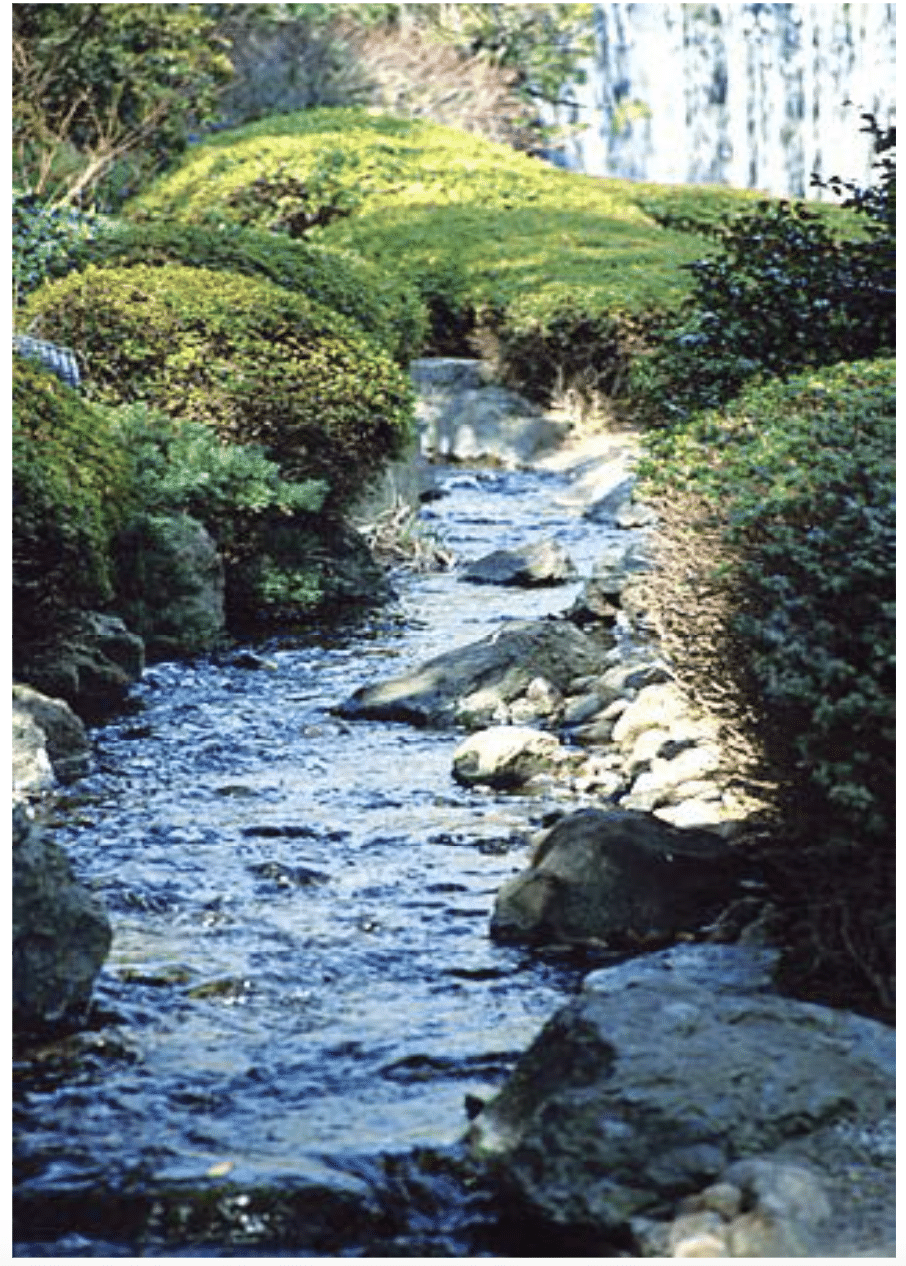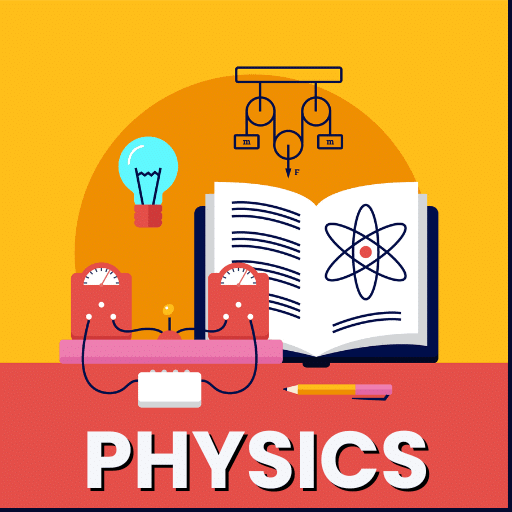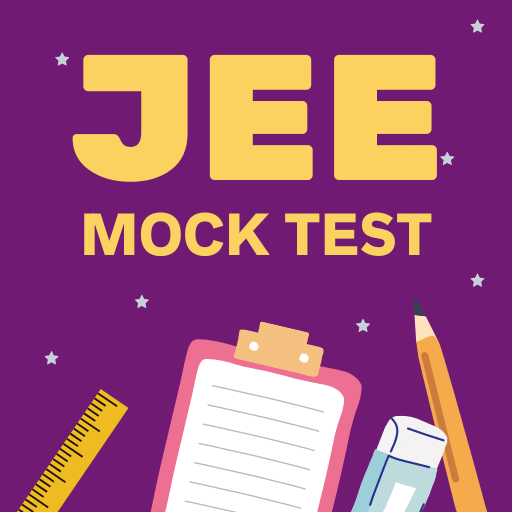Class 9 English Extra Question Answers - The Brook
Q1. I come from haunts of coot and hem; I make a sudden sally And sparkle out among the fern, To bicker down a valley.
(i) Identify 'I' in the current extract.
(ii) It originates from..................
(iii) Which poetic device is used here?
Ans. (i) 'I' refers to the brook.
(ii) The brook emerges from the mountains, a favourite haunt of the birds like the coot and the heron.
(iii) The poet has used personification by attributing human qualities to The Brook. Alliteration is present in phrases like 'sudden sally' and 'haunts hern.'

Q2. By thirty hills I hurry down, Or slip between the ridges, By twenty thorpes, a little town, And half a hundred bridges.
(i) The brook passes by .........................
(ii) How is the journey of the brook similar to that of man?
(iii) The number of words symbolise .................
or
(i) What is the brook's movement like?
(ii) What do the words 'thirty hills' and 'twenty thorpes' suggest?
(iii) What poetic device does the poet use in the first line?
Ans. (i) hills and bridges, ridges and villages, towns and lands.
(ii) It starts with a shrill sound and passes through difficulties.
(iii) the length of the journey.
or
(i) The movement of the brook appears to be steady.
(ii) The words suggest the long and continuous journey of the brook.
(iii) Personification has been used here.
Q3. Till last by Philip's farm, I flow To join the brimming river, For men may come and men may go, But I go on forever.
(i) Brook's destination is .........................
(ii) The comparison made between man and the brook is that.....................
(iii) Name the poetic device used here.
or
(i) What is the motive of the brook?
(ii) Which poetic device is used in the third line?
(iii) What is the message conveyed in the last two lines?
or
(i) Where is Philip's farm situated?
(ii) What does the phrase 'brimming river' mean?
(iii) Which poetic device is used here?
Ans. (i) the brimming river
(ii) the man is mortal, but the brook is immortal.
(iii) Personification and refrain have been used here.
or
(i) The motive of the river is to join the brimming river.
(ii) Repetition and Alliteration have been used here.
(iii) The last two lines convey the message that man is mortal whereas nature is immortal.
or
(i) Philip's farm is situated close to the brimming river in which the brook finally merges.
(ii) Brimming river suggests that the river is overflowing with water.
(iii) Personification and Refrain have been used here.
Q4. I chatter over stony ways, In little sharps and trebles, I bubble into eddying bays, I babble on the pebbles.
(i) Explain, 'I chatter'.
(ii) Name the poetic devices used here.
(iii) Which line indicates that the brook is full of enthusiasm?
or
(i) How does the brook move?
(ii) What is the mood of the brook as it flows towards the river?
(iii) What poetic device has been used in the last two lines?
Ans. (i) The brook makes a rapid clicking noise, while it moves over stony paths and thus appears to be talking.
(ii) Alliteration and Personification have been used here.
(iii) Line 4 indicates the brook's enthusiasm.
or
(i) The brook moves swiftly through twists and turns, creating a lot of noise.
(ii) The brook is cheerful and filled with joy.
(iii) Personification has been used here.
Q5. With many a curve my banks I fret By many a field and fallow, And many a fairy foreland set With willow-weed and mallow.
(i) Explain the first line.
(ii) The rhyme scheme of the stanza is................
(iii) Which word tells us that it also flows by the piece of land that extends into the sea?
or
(i) Who is 'I' here?
(ii) What is the literary device used in the first line?
(iii) What is the aim of the brook?
Ans. (i) The brook flows in a curve because at one point the path curves and it wears away.
(ii) abab
(iii) Foreland indicates the piece of land that extends into the sea.
or
(i) 'I' refers to the brook here.
(ii) Personification has been used in the first line.
(iii) The aim of the brook is to merge with the brimming river.
Q6. I chatter, chatter, as I How To join the brimming river, For men may come and men may go, But I go on forever.
(i) The brook flows ......................
(ii) What is the relevance of the brimming river?
(iii) Explain 'brimming'.
Ans. (i) over stones and pebbles, creating a lot of noise and appears to be talking.
(ii) The brook originated in the mountains, undertook an arduous journey and would join the brimming river, its final destination.
(iii) It has abundant water, indicating its everlasting flow.
Q7. I wind about, and in and out, With here a blossom sailing, And here and there a lusty trout, And here and there a grayling.
(i) What does the first line suggest about the brook's movement?
(ii) What do 'lusty trout' and 'grayling' refer to?
(iii) What is suggested by the last two lines?
or
(i) How is the brook moving at this time?
(ii) What is the brook carrying with it?
(iii) Why is the word 'wind about' used here?
Ans. (i) It moves in a crisscross fashion, sometimes bending and sometimes turning.
(ii) Trout' and 'grayling' are the kinds of fish.
(iii) A number of living things befriend the brook while going on its journey.
or
(i) The brook is moving in a zigzag way, encountering twists and turns.
(ii) The brook is carrying blossoms and fishes with it.
(iii) 'Wind about' is a reference to the gusty movement of the brook.
Q8. And here and there a foamy flake Upon me, as I travel With many a silvery water-break Above the golden gravel.
(i) Explain the first two lines.
(ii) Identify the poetic device used in lines three and four.
(iii) This comparison reflects the poet's..............
Ans. (i) The zigzag water movements form a heavy foam of water in the brook.
(ii)The poetic device is a metaphor as the poet describes the appearance of water as silvery. The poet has also used alliteration in golden gravel.
(iii) respect for nature
Q9. And draw them all along, and flow To join the brimming river For men may come and men may go, But I go on forever.
(i) Identify 'them' in the current stanza.
(ii) Why does the poet repeat the last two lines?
(iii) Explain, 'But I go on forever'.
Ans. (i) Stones, pebbles, flowers, and fishes refer to them in the current stanza.
(ii) Because he wants to emphasise that man is born and dies, but the brook's existence is permanent.
(iii) The poet contrasts the timelessness of the brook with the finite nature of human existence.
Q10. I steal by lawns and grassy plots, I slide by hazel covers I move the sweet forget-me-nots That grow for happy lovers.
(i) Explain the first two lines.
(ii) How are the 'sweet forget-me-nots' moved by the brook?
(iii) 'forget-me-nots' refer to ......................
or
(i) What does the phrase '1 steal' means here?
(ii) What do you mean by 'forget-me-nots'?
(iii) What do lovers generally like?
Ans. (i) The brook flows silently through lawns and meadows and elegantly moves on by the small trees having edible nuts.
(ii) Lovers throw them into the brook and they flow with it.
(iii) a type of flower
or
(i) "I steal' here is the reference to the brook's movement.
(ii) 'Forget-me-nots' are a kind of flowers.
(iii) Lovers generally like the forget-me-nots.
Q11. I slip, I slide, I gloom, I glance, Among my skimming swallows; I make the netted sunbeam dance Against my sandy shallows.
(i) Which line suggests different movements and moods of the brook?
(ii) Identify the figures of speech used in line three.
(iii) What do you understand by 'netted sunbeam'?
or
(i) What do you understand by 'skimming swallows'?
(ii) What is the poetic device used in the first line?
(iii) What does 'the netted sunbeam' refer to?
Ans. (i) Line one suggests the different movements and moods of the brook.
(ii) Personification has been used in line three.
(iii) The sunlight seems to be trapped in the water like the fish. Its reflected rays produce a net-like effect of flashing light.
or
(i) 'Skimming swallows' refers to the swallows who are hunting in the brook's water.
(ii) Alliteration has been used in the first line.
(iii) The sunlight seems to be trapped in the water like the fish. Its reflected rays produce a net-like effect of flashing light.
Q12. I murmur under the moon and stars In brambly wildernesses; I linger by my shingly bars; I loiter round my cresses.
(i) What does 'murmur' suggest about the brook's movement?
(ii) Identify the poetic device used in line one.
(iii) Explain 'linger by my shingly bars'.
or
(i) Who is T in the above lines?
(ii) Why does 'I' murmur in the first line?
(iii) What does 'linger' and 'loiter' indicate?
Ans. (i) It suggests a slow and gentle movement of the brook.
(ii) Onomatopoeia has been used in line one.
(iii) The brook is interrupted by the hurdles coming in its way.
or
(i) 'I' here refers to the brook.
(ii) The brook murmurs because it has slowed down.
(iii) The words 'linger' and 'loiter' indicate that the brook is moving slowly.
Q13. And out again I curve and flow To join the brimming river, For men may come and men may go, But I go on forever.
(i) Which line reflects the importance of the destination?
(ii) Identify the poetic device, apart from personification.
(iii) Which line indicates that the brook is everlasting?
or
(i) Whom does 'I' refer to?
(ii) Explain, 'the brimming river'.
(iii) What do the last two lines indicate about 'I'?
Ans. (i) Line one, because despite the hurdles coming in the brook's movements, it gets ready to join its destination.
(ii) The refrain is the poetic device. Repetition of the same verses. Alliteration has also been used.
(iii) Line four indicates that the brook is everlasting.
or
(i) 'I' here refers to the brook.
(ii) The river is overflowing with water.
(iii) The last two lines indicate that, unlike mortal humans, the brook is eternal.
Q14. Give at least two similarities between the brook and the human beings. or How is the journey of the brook similar to human life? or Mention briefly how we can relate the journey of a brook with that of human life?
Ans. The similarities between the brook and human beings lie in their shared experiences. Both the brook and humans must struggle to reach their final destinations, facing various hurdles along the way. They encounter similar phases in life, experiencing both happiness and difficulties as they journey through their respective paths.
Q15. Why have the lines- "For men may come and men may go, but I go on forever" been repeated in the poem several times? What is the significance of these lines?
Ans. The repeated lines, 'For men may come and men may go, but I go on forever', highlight the contrast between human life and the brook. Humans are mortal and have a limited lifespan, while the brook is immortal and continues to flow endlessly. This signifies that, despite the transient nature of human existence, the natural world persists beyond individual lives, symbolising the eternal cycle of nature.
Q16. Why has the poet introduced the poem in the form of the brook's autobiography rather than narrating it himself?
or
Why do you think that the poet let the brook describe its journey rather than describing it himself?
Ans. The brook is personified throughout the poem, making it feel more lively and vivid. This choice allows readers to experience the brook's journey directly as if it is talking to us. This approach creates a more authentic connection, enhancing the overall impact of the poem.
Q17. How does the brook 'sparkle'?
Ans. The brook sparkles as it flows from the mountains, where herons and coots reside. It shines amidst the grass, and the author likens the water and stones to silver and gold. The brook's sparkle is particularly evident when it glistens in the light of the moon and stars, as well as through the netted sunbeam.
Q18. Bicker means to quarrel. Why does the poet use this word here? or How and why does the brook 'bicker'?
Ans. The word bicker suggests a noisy quarrel. In the poem, the brook is described as flowing with various sounds, reminiscent of children playfully arguing. This comparison highlights the lively and playful nature of the brook, as its flow creates a symphony of noises that evoke the image of a cheerful dispute.
Q19. Write a note on personification used in the current poem.
Ans. Personification is a literary device where non-living things are given human characteristics. In the current poem, the brook is personified as it describes its journey. It originates, flows, and overcomes obstacles, ultimately joining the brimming river.
Q20. The poem has many examples of alliteration. List any five examples.
Ans. Examples are as follows ·
- I make a sudden sally (In these lines' sound is repeated.)
- By twenty thorpes, a little town (In this line T sound is repeated.)
- By many a field and fallow, And many a fairy foreland set (In these lines 'f sound is repeated.) ·
- With willow-weed and mallow (In this line 'w' sound is repeated.) ·
- For men may come and men may go (In this line 'm' sound is repeated.)
Q21. Write a note on metaphors used in the current poem.
Ans. 'The Brook' serves as a metaphor for human life, depicted as a flowing river. The poem illustrates how the brook cannot travel in straight lines but instead moves in twists and turns, symbolising the anger present in life. The obstacles the brook encounters represent the challenges individuals face throughout their lives. Ultimately, when the brook 'dies' or merges into the river, it signifies the death of a person.
Q22. How many hills and bridges does the brook pass during its journey?
Ans. The brook comes down from the mountains, which is the favourite haunt of the birds like the coot and the heron. It's going towards the brimming river. It passes thirty hills and a hundred bridges on its way. The numbers suggest that it is a very long journey.
Q23. Where does it finally meet the river?
Ans. After crossing various bridges, ridges, hills, towns, and villages, the brook reaches to the Phillip's farm. Phillip's farm is situated near the brimming river. From Phillip's farm, it joins the brimming river.
Q24. Why is the word 'chatter' repeated in the poem?
Ans. The word chatter is repeated several times in the poem to signify the noise made by the brook. This repetition enhances the flow and rhythm of the poem, creating a musical quality. Additionally, it personifies the brook, making it seem as if it is talking as it moves along its path.
Q25. 'With many a curve my banks I fret'. What does the poet mean by the statement?
Ans. The poet suggests that the water of the brook forcefully interacts with the curves of its banks. This imagery conveys a sense of frustration as if the brook is upset with the bends in its path. Moreover, it serves as a metaphor for the difficulties we encounter in life, which can also cause us to feel troubled.
Q26. 'I wind about and in and out'. What kind of picture does this line create in your mind?
Ans. Tennyson uses imagery playfully to enhance the poem's lyrical quality. The line creates a vivid picture of water flowing freely in a zigzag manner. It suggests that the brook sometimes flows underground, only to bubble back up to the surface, illustrating its dynamic journey.
Q27. What are the different companions of the brook?
or
Name the different things that can be found floating in the brook. or Name the different things that can be found floating in the brook.
Ans. Different things move along with the water of the brook: Blossoms sail on its surface, fishes like trout and grayling live in it, foamy flakes flow over its surface and sweet forget-me-not flowers and pebbles flow with it.
Q28. What does the poet want to convey by using the words 'steal' and 'slide'?
Ans. The poet uses the words 'steal' and 'slide' to illustrate how the brook moves effortlessly through its surroundings. This imagery suggests that the brook navigates around obstacles, such as sandy banks, trees, and wild growth, with a sense of grace and fluidity.
Q29. 'I make the netted sunbeam dance'. What does 'the netted sunbeam' mean? How does it dance? or What does the poet mean by the line- 'I Make the netted sunbeam dance'?
Ans. The phrase 'the netted sunbeam' refers to the sunlight filtering through the trees and reflecting on the surface of the water in the brook. In the morning, the sun's rays create a net-like pattern as they pass through the branches. As the water ripples, these rays appear to dance as they shimmer and shift, creating a lively and enchanting effect.
Q30. What is the 'refrain' in the poem? What effect does it create?
or
What is the refrain in the poem The Brook'? What effect does it create?
Ans. The refrain in the poem is 'For men may come and men may go, but I go on forever'. This line highlights the permanence of the brook in contrast to the temporary nature of human life. It encapsulates the central theme of the poem and reinforces it throughout.
Q31. Imagine you are the brook. Having faced a number of obstructions, you have joined the brimming river. Write a diary entry about your thoughts highlighting the importance of a destination in life.
Ans. Wednesday 11th March. 20XX. 11 pm
Dear Diary
Today my joy knows no bounds. At last, I have joined my destination, the brimming! river. When I originated in the mountains, I was happy to see myself in the lap of beautiful nature. I started my journey towards my goal. I crossed many bridges, hills, and villages. I was interrupted by stones and pebbles and many more interruptions. gut I kept on going, through different moods and movements. I reached where I had to go. Unlike man, I am immortal, but both of us have to undertake a journey that is quite arduous. But we have to go fighting and winning, to our destination, as without it our existence is hollow and meaningless. So, a destination is a must in life.
Q32. Had the brook got exhausted midway, it would not have reached its destination. How far is this statement true about our life? Explain.
Ans. It is true that if the brook got exhausted midway, it would not have reached its destination. It is also true in our life. Whatever hurdles the brook or we face in life, must be overcome. If we are tired, we can have a short rest, but we should not stop under the pretext of exhaustion. Life is meaningful only if we are moving. Still, life is like stagnant water, which breeds lethargy, monotony, etc. So, it is better to be tough and go on as tough times never last, but tough men do. Only then will we be able to achieve our final destination.
Q33. How is the current poem a symbol of life? Quote the examples of parallelism between man's life and the brook. or Bring out the parallelism between the movement of the brook and the course of human
Ans. The current poem is undoubtedly a symbol of life. The brook's journey from its origin to joining its final destination, the brimming river, is man's journey of life from birth to death. Whatever hurdles it faces on the way, reflect what man faces all through his life. The brook's noisy flow is similar to man's struggling and fretting and fuming against the problems. The brook slips, slides, glooms, and glances. So, does man. The brook carries many things with it as it flows. So, does man, as he meets people, builds relationships, carries memories and collects materialistic things as he goes through life. The only difference between man and the brook is that man's life comes to an end, while the brook lives on and on forever.
|
119 videos|684 docs|84 tests
|
FAQs on Class 9 English Extra Question Answers - The Brook
| 1. What is the main theme of "The Brook"? |  |
| 2. How does the poet use imagery in "The Brook"? |  |
| 3. What literary devices are prominent in "The Brook"? |  |
| 4. How does the structure of "The Brook" contribute to its meaning? |  |
| 5. What emotions does "The Brook" evoke in the reader? |  |


























